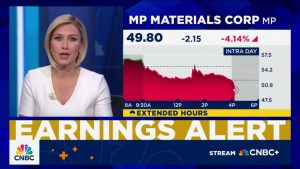Barclays (LSE:BARC) shares have risen an impressive 82% over the past year. They’ve jumped as markets have predicted a swathe of interest rate cuts that could boost lending activity.
Yet despite these gains, the FTSE 100 bank still looks dirt cheap on paper. It trades on a forward-looking price-to-earnings (P/E) ratio of 7.3 times.
It also has a price-to-earnings growth (PEG) multiple of 0.4. Any reading below 1 implies that a stock’s undervalued.
However, I’m not tempted to buy the banking giant for my portfolio. There are multiple threats I think could cause Barclays’ share price to erode again. Here are just two.
Motor finance scandal?
Trouble’s brewing for UK banks as the industry braces for another costly legal fight. This week saw “finance bosses, government officials and regulators” meet to discuss fears in the car finance industry over crushing financial penalties, according to the Financial Times.
The Financial Conduct Authority (FCA) is investigating whether secret commissions from banks to retailers resulted in unfair deals to consumers. It’s led to a sharp rise in customer complaints to the Financial Ombudsman.
The sense of gloom’s risen further in recent days, the Court of Appeal ruling that such commissions should have be approved by customers.
Lloyds has set aside £450m to cover possible costs, but has said it’s reviewing this amount following last week’s court ruling.
The Black Horse Bank is most exposed to the potential scandal. However, other banks like Barclays are also in danger of thumping penalties. Estimates differ, but Numis thinks motor finance providers could face a thumping £10bn bill.
It’s probably not as large as the infamous Personal Protection Insurance (PPI) saga. But this episode could still potentially take a big bite out of Barclays’ bottom line.
Poor growth outlook
Banks are some of the most economically sensitive companies out there. Periods of low growth result in reduced lending activity, higher loan delinquencies, and typically weaker margins due to lower interest rates.
Unfortunately, this is the backcloth Barclays will likely be forced to navigate in the years ahead. This week, the Office for Budget Responsibility (OBR) predicts that — after peaking at 2% in 2025 — GDP growth will fall thereafter, hitting 1.5% in 2027 and 2028. Estimates beyond next year were actually cut by the OBR.
Added to the possibility of a US recession — which JP Morgan recently apportioned odds of ‘1 in 3’ — Barclays could struggle over the rest of the decade, perhaps longer.
Emerging market banks like HSBC and Standard Chartered face dangers of their own. More specifically, a prolonged slowdown in China’s economy, and especially fresh shocks for the country’s property sector, pose a large threat.
But the opportunities for superior long-term returns (through share price gains and dividend growth) make these more attractive to me than Barclays. Their Asian and African markets are tipped to expand strongly due to themes including rapid population growth, improving consumer wealth and ongoing urbanisation.
Like Barclays, these businesses also trade on attractive P/E ratios. These are 7.5 times and 7.2 times for Standard Chartered and HSBC respectively.
This post was originally published on Motley Fool





